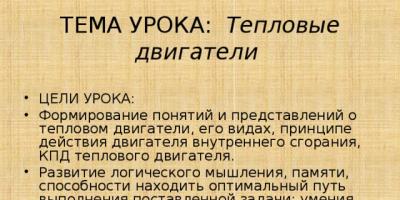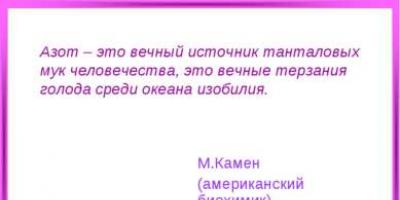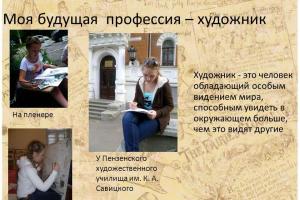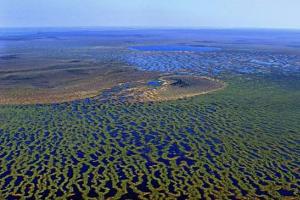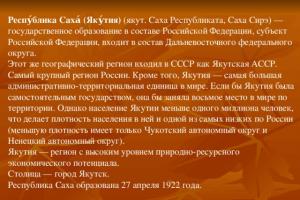Presentation for the lesson “Radio waves”
teachers of MAOU Lyceum No. 14
Ermakova T.V.

Radio waves are electromagnetic radiation with wavelengths of 5·10 −5 -10 10 meters and frequencies, respectively, from 6·10 12 Hz and up to several Hz. Radio waves are used to transmit data in radio networks.
James Maxwell first spoke about radio waves in his work in 1868. In 1887, Heinrich Hertz experimentally confirmed Maxwell's theory, receiving radio waves several tens of centimeters long in his laboratory.

WHAT ARE RADIO WAVES?
- electromagnetic vibrations propagating through space at the speed of light
- transfer through space energy emitted by a generator of electromagnetic oscillations
- are born when the electric field changes
- characterized by frequency, wavelength and power of transferred energy


Range frequencies
Range name (abbreviated name)
Very Low Frequencies (VLF)
Name wave range
Low frequencies (LF)
Wavelength
Myriameter
300–3000 kHz
Kilometer
Mid frequencies (MF)
High frequencies (HF)
Hectometric
Very high frequencies (VHF)
300–3000 MHz
Decameter
Ultra high frequencies (UHF)
Meter
Ultrahigh frequencies (microwave)
decimeter
Centimeter
Extremely high frequencies (EHF)
300–3000 GHz
Hyper high frequencies (HHF)
Millimeter
decimmillimeter

RADIO WAVE RANGES
- for aviation communications
- for landline communication
- television
- broadcasting
- for space communications
- for maritime communications,
- for data transmission and medicine,
- for radar and radio navigation.

RANGE RADIO WAVES


Term
Shortwave range (HF)
Range frequencies
2–30 MHz
"CB"
Explanations
25.6–30.1 MHz
"Low Band"
Due to the nature of distribution in mainly used for long-distance communications.
33–50 MHz
Civil range in which they can
use private communications. In different countries, this area is distinguished from 40 to 80 fixed frequencies (channels).
It is not clear why, but in Russian it is not found a term that defines this range.
136–174 MHz
400–512 MHz
"800 MHz"
Most common range mobile landline communications.
806–825 and 851–870 MHz
Range of mobile landline communications. Sometimes this area is not identified in separate range, but they say VHF, implying a frequency band from 136 to 512 MHz.
Traditional "American" range; widely used by mobile communications in USA. We didn't get much distribution.

HOW RADIO WAVES PROPADE
- radio waves are emitted through an antenna
- transmissions from long-wave broadcast stations can be received at distances of up to several thousand kilometers
- Medium wave stations can be heard within a range of thousands of kilometers.
- The energy of short waves decreases sharply with distance from the transmitter.
- Studies of short and ultrashort waves have shown that they quickly attenuate when they travel near the Earth's surface. When the radiation is directed upward, short waves return back.

SPREADING RADIO WAVES

SPREADING HF and VHF

PROPAGATION OF SHORT WAVES DEPENDING ON FREQUENCY AND TIME OF DAY

- As the wavelength decreases, their attenuation and absorption in the atmosphere increases.
- The propagation of waves shorter than 1 cm is affected by fog, rain, and clouds, which greatly limit the communication range.








The communication range depends on: Radiation power; Radiation power; Wavelengths; Wavelengths; Wave polarization; Wave polarization; Electrical parameters of the earth's surface; Electrical parameters of the earth's surface; Electrical parameters of the propagation medium; Electrical parameters of the propagation medium; Conditions of reception and transmission. Conditions of reception and transmission.



Ionosphere The ionosphere is the upper (from altitudes km) part of the earth's atmosphere with a high content of charged particles (electrons and ions). The main source of ionization is solar radiation, which carries about 99% of ionizing energy. The structure of the ionosphere is determined by the magnitude and nature of the dependence of the concentration of charged particles on altitude and time. The heterogeneity of the earth's atmosphere leads to the fact that, in addition to the main one, several more maxima in the concentration of charged particles are observed. The part of the ionospheric region containing a relative maximum of electron concentration or characterized by a sharp change in concentration is called a layer.


Division of radio waves into ranges Conditional Conditional Name of the section of the radio wave range Wavelength, m Name of the section of the radio frequency range Frequency, kHz 4 Myriameter or ultra-long waves (VLF) Very low frequencies (VLF) Kilometer or long waves (LW) Low frequencies (LF) Hectometric or medium waves (MF) Medium frequencies (MF) (3 - 30) * 10^2 7 Decameter or short waves (HF) High frequencies (HF) (3 - 30) * 10^3 8 Meter waves (MV) Very high frequencies (VHF) (3 - 30) * 10^4 9 Decimeter waves (DCW) 0.1 - 1 Ultra-high frequencies (UHF) (3 - 30) * 10^5

Decreased communication quality is caused by: Signal fading; Fading of signals; Multipath; Multipath; Fluctuations in environmental parameters; Fluctuations in environmental parameters; Ionospheric disturbances; Ionospheric disturbances; Industrial disturbances; Industrial disturbances; Household disturbances. Household disturbances.

Fading of signals The nature of fading mainly comes down to the interference of several rays arriving at the receiving location along different trajectories. There are other reasons for the appearance of several beams at the receiving point. Multipath in combination with fluctuations of ionospheric parameters leads to the fact that the characteristics of the resulting signal field at the receiving location are constantly changing and the reception of short waves is accompanied by fast (0.1 - 1 sec.) and slow changes in the signal level at the receiver input - fading.



RADIO WAVES.
"Berezikovskaya Secondary School"
Teacher: German Alla Viktorovna

Radio waves are emitted through an antenna into space and
propagated in the form of electromagnetic field energy. AND
although the nature of radio waves is the same, their ability to
propagation strongly depends on the wavelength.
The earth represents a conductor of electricity for radio waves
(although not very good). Passing over the surface of the earth,
The radio waves gradually weaken. This is due to the fact that
electromagnetic waves excite in the surface of the earth
electric currents, which is where some of the energy is spent. Those. energy
absorbed by the earth, and the more, the shorter the length
wave (higher frequency). In addition, the wave energy weakens
also because the radiation spreads in all directions
space and, therefore, the further from the transmitter
the receiver is located, the less energy
per unit area and the less of it falls into
antenna.

Back in 1902, the English mathematician Oliver Heaviside and
American electrical engineer Arthur
Edwin Kennelly almost simultaneously predicted that
There is an ionized layer of air above the Earth -
a natural mirror that reflects electromagnetic waves.
This layer was called the ionosphere. The Earth's ionosphere should
was allowed to increase the propagation range
radio waves at distances exceeding line of sight.
This assumption was experimentally proven in 1923.
Radio frequency pulses were transmitted vertically upward and
returning signals were received. Time measurements between
sending and receiving pulses made it possible to determine the height
and the number of reflection layers.

How do radio waves travel?
Radio waves are emitted through an antenna
into space and spread into
form of electromagnetic field energy.
And although the nature of radio waves is the same,
their ability to spread
strongly depends on the wavelength.
The earth for radio waves represents
conductor of electricity (although not
very good). Passing over
surface of the earth, radio waves
gradually weaken. It's connected with
because electromagnetic waves
excite in the surface of the earth
electric currents, which is where some of the energy is spent
energy. Those. energy is absorbed
land, and the more, the shorter
wavelength (higher frequency). Except
In addition, the energy of the wave also weakens
because the radiation
spreads in all directions
space and, therefore, than
further from the transmitter is
receiver, the less quantity
energy per unit
area and the less of it gets into
antenna.
Propagation of long and short waves

